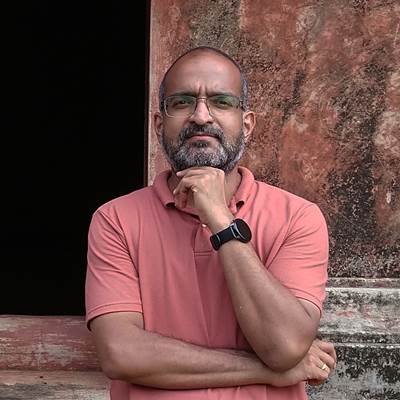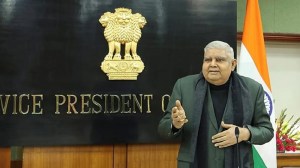Click here to join Express Pune WhatsApp channel and get a curated list of our stories
What does it mean for Pune to host the Army Day Parade?
The Army Day Parade in Pune will be seen as a celebration of the city’s rich military history and will strengthen its future as a defence research and industrial hub.
 Infantry combat vehicle Sarath during the Army Day Parade rehearsal on December 30 in Pune. (Express Photo by Sushant Kulkarni)
Infantry combat vehicle Sarath during the Army Day Parade rehearsal on December 30 in Pune. (Express Photo by Sushant Kulkarni)Pune is set to witness a historic event on January 15, 2025, when the prestigious Army Day Parade will be held in the city for the first time. This will be the third occasion on which a city other than New Delhi will host the Army Day Parade, keeping in line with the Union government’s decision to hold events of national importance outside the national capital. Notably, this is the second occasion when the Pune-headquartered Southern Command is hosting the event in its area of responsibility after Bengaluru in 2023.
Every year, January 15 is commemorated as Army Day to mark the occasion when General (later Field Marshal) K M Cariappa took over the command of the Indian Army from General Sir F R R Bucher, the last British Commander-in-Chief, in 1949 and became the first Indian Commander-in-Chief of Independent India.
Pune hosting the Army Day Parade holds significance that extends beyond its symbolic value. It can be seen as a celebration of the city’s rich military history dating back to the era of the Maratha empire. The event also aptly highlights the current military prominence of Pune as it is home to numerous operational, strategic, and training establishments. However, it is most importantly a conscious effort towards strengthening Pune’s future as a major defence research and industrial hub of India. All Army Day Parade events and those in the build-up underline these three aspects.
The past and its present
Today’s Pune or yesteryear’s Poona or Punawadi and its surrounding locations are located amid the Sahyadri ranges of the Western Ghats, an area that has been on the military map of the Indian subcontinent since the medieval period. Under the military visionary Chhatrapati Shivaji and his successors, Pune became a vital centre for military planning, recruitment, and training. The famous Shaniwar Wada, built in the early 18th century, became the seat of the Peshwas, the prime ministers of the Maratha empire. On the other side of the Sahyadris, the East India Company had taken over the island of Bombay.
The Great Indian Rebellion of 1857 did not just result in the transfer of power from the East India Company to the Crown but also led to a reorganisation of existing military formations. The then Presidency Armies were brought under the umbrella of a unified structure under the Commander-in-Chief. With effect from April 1, 1895, the Presidency Armies were abolished to form the Indian Army.
Four separate commands, Bombay, Bengal, Punjab and Madras, came into existence with the Bombay Command being headquartered in Pune from April 1, 1895. In the years till independence, Southern Command remained a key facilitator of training. The Southern Command was and still remains the oldest field formation of the Indian Army by virtue of retaining the structure at the earliest phase of reorganisation in 1895. The Army Day Parade and the events before it have various programmes celebrating this military history.
Today’s Pune, a major military centre on India’s map
 A mounted contingent of the Indian Army during the Army Day Parade rehearsal on December 30. (Express Photo by Sushant Kulkarni)
A mounted contingent of the Indian Army during the Army Day Parade rehearsal on December 30. (Express Photo by Sushant Kulkarni)
Today, the Southern Command comprises two Corps with their headquarters at Jodhpur and Bhopal and also other static formations. The area of responsibility of the Command includes 11 states and four Union Territories covering nearly 41 per cent of the country’s landmass. The formations, establishments and units of the command are spread over 19 cantonments and 36 military stations.
In addition to being home to the strategically significant Southern Command, Pune is also home to some major defence establishments. The over-200-year-old Bombay Engineer Group and Centre, which will coincidently host the Army Day Parade, stands as a major centre of military engineering. Premier defence training establishments like the National Defence Academy, Armed Forces Medical College, College of Military Engineering, Military Intelligence Training School and Depot, and INS Shivaji put Pune on the global map of military training. Pune is also home to an airbase of frontline fighter jets and several critical Indian Air Force establishments. Hosting the Army Day Parade is considered a recognition of Pune’s present military prominence.
Three critical DRDO facilities, Armament Research and Development Establishment (ARDE), High Energy Material Research Laboratory (HEMRL) and Research and Development Establishment (Engineers), and three sensitive ordnance factories put Pune at the forefront of defence research manufacturing. However, one of the most spectacular success stories has been how private-sector defence companies have flourished over the last two decades.
Strengthening Pune’s future as a defence industrial hub
One of the most promising features of the Army Day Parade and the events in the run-up to it will be showcasing the achievements and products of the industry partners under the umbrella initiative Atmanirbhar Bharat. Dozens of stalls of the private sector’s industrial entities will be set up during these events. The parade will also include a tableau showcasing the achievements of the defence industries.
“From a small number of few dozens in the early 2000s, Pune and surrounding areas now have close to 600 companies of various sizes and profiles that supply to the defence and security ecosystem of the country. Southern Command through its Regional Technology Node has undertaken various initiatives focusing on development of indigenous defence technologies and interface with academic and industrial partners,” said a senior Army officer.
These firms have been contributing towards the development and production of key defence systems by providing software and hardware components, drone technology, artificial intelligence-based tools, aerospace technology, etc.
In February this year, during the MSME Defence Expo held in Pune, the government of Maharashtra announced that four defence manufacturing clusters would be created at Nagpur, Shirdi, Pune and Ratnagiri. The displays and industry interactions during the Army Day Parade are being looked at as a step in this direction.
At the same time, the three DRDO facilities and premier institutions like the Defence Institute of Advanced Technology are working on several futuristic technologies for the armed forces.
Click here to join Express Pune WhatsApp channel and get a curated list of our stories













